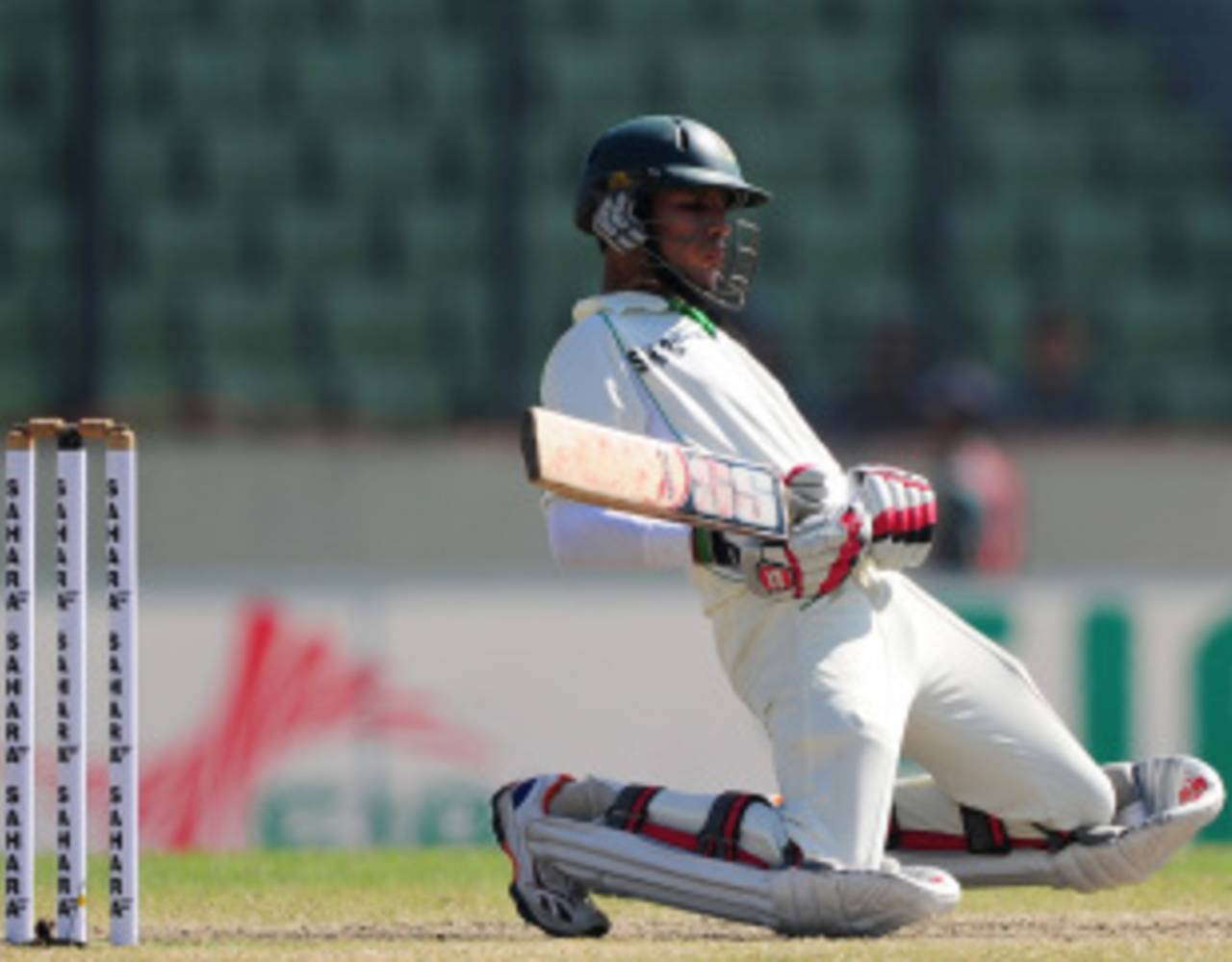Batting, fielding challenges for Bangladesh in Chittagong
Although the pitch for the second Test against Sri Lanka is expected to be flatter, Corey Richards, the Bangladesh batting coach has asked his batsmen to minimise the risks when playing cross-bat shots
Mohammad Isam
02-Feb-2014

File photo: Corey Richards, Bangladesh's batting coach, has advised his batsmen to factor in risk when playing short-pitched balls • AFP
The previous time Bangladesh suffered a four-day defeat was against Zimbabwe in April last year. They bounced back successfully and won the second Test to level the series. A similar comeback is hoped for from Bangladesh in the second Test against Sri Lanka, after they suffered an innings defeat in the first game in Mirpur.
Key to their chances of a comeback would be their batting. There have been five Test centuries each at the Zahur Ahmed Chowdhury Stadium in Chittagong and the Shere Bangla National Stadium - the venue of the first Test - but a positive mindset will be easier on a Chittagong pitch that is expected to be flatter and slower. Shaminda Eranga and Suranga Lakmal may have to use their guile with the ball rather than make extra use of their shoulders.
In spite of the seeming lack of bounce, Corey Richards, the team's designated batting coach, advised the Bangladesh batsmen to lower the risk of playing cross-batted shots and not simply commit when the ball is short.
"The best way we play is when we are positive," Richards told ESPNcricinfo. "When you are playing a cross-bat shot, you have to make sure the percentages are in your favour, lower the risk as much as possible. The guys who did it [in the first match] were honest about it. As we have said to the players, they can try what they like, but it is up to us to make sure the percentages are in our favour."
There have also been occasions where a bowler like a Fidel Edwards has struck Shahriar Nafees on the nose on this Chittagong ground. Bangladesh have been vulnerable to the short ball, too, as is evident from the success Tino Best had in 2012. The Zimbabwe attack also used the shorter length to good effect, though Bangladesh handled it better in the second Harare Test last year. The side has also had improved batting performances since November 2012, the high point being the Galle Test against Sri Lanka where they scored 638, their highest Test total. Hence the scores of 232 and 250 in the first Test were less than flattering for the side.
"It is up to the players, at the end of the day. They are all bitterly disappointed," Richards said. "We have turned it around before, Zimbabwe [in April 2013] is a prime example. We have beaten our highest score in the past 12 months or so. I'm looking forward to seeing someone put up his hand in this Test."
Apart from handling the short-stuff, the Bangladesh batsmen will also have to shed the mindset that took control of them in the two Bangladesh Cricket League matches at the BKSP grounds a couple of weeks ago. The pitches there were too flat and left no chance for the bowlers to make an impression. Some of the younger batsmen cashed in, but captain Mushfiqur Rahim had warned at the time that such tracks were not good for batsmen ahead of a Test.
According to Richards, the pitches probably eased the batsmen's mindset a little too much, especially seeing how someone like Marshall Ayub, a batsman who had earlier improved his technique, fell to poor shots in Mirpur.
"We probably would have liked to see a bit more bounce in those BKSP wickets for all our batters, pace bowlers and spinners," Richards said. "Marshall has improved his play against the short-pitched ball a lot over the last 12 months. The shot [he played in the second innings] wasn't a smart one, but they all understand what they need to do. We will show in this Test that the last one was [just one] bad Test."
Part of that bad Test was the team's fielding, which has not seen such a shoddy performance since the close-in fielders dropped some catches in the Mirpur Test against Pakistan in late 2011.
Shakib Al Hasan admitted that had the fielding been better, things could have been different against Sri Lanka. He said he wanted to see an improved fielding performance, after the team had done so well last year, and said the younger members of the side needed to step up.
"Mahela [Jayawardene] and Kaushal Silva had catches dropped and stumpings missed, and they scored a lot of runs. If these didn't happen, they would have made around 500 runs at best," Shakib said. "It isn't the same as scoring 700 runs. We had to bat for two days, which would have been very difficult. It wouldn't have been the same had we bowled them out for 400-500 runs.
"The seniors have more responsibility, but that doesn't mean the younger players will have any less. Everyone has to help up, starting from the fans, the ball boys, support staff as well as the eleven players out in the middle."
Mohammad Isam is ESPNcricinfo's Bangladesh correspondent. He tweets here